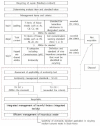A Study on Safety Management Plan for Recycling of Medium-Contact Wastes via Ecotoxicity Assessment
- PMID: 35864823
- PMCID: PMC9294541
- DOI: 10.1177/11786302221111872
A Study on Safety Management Plan for Recycling of Medium-Contact Wastes via Ecotoxicity Assessment
Abstract
In South Korea, hazardous characteristics of wastes to be recycled are managed through the "Environmental Impact Assessment of Recycling" system. The ecotoxicity of medium-contact recyclable wastes, that is, those in contact with soil, groundwater, surface water, etc., is managed according to this system and is determined based on whether or not they exceed an ecotoxicity value (TU) of 2.0. The ecotoxicity of wastes is tested and determined by using pretreated eluate samples according to the Official Wastes Test Standard and applying the Official Water Pollution Process Test Standard. However, no ecotoxicity management limits are stipulated for medium-contact recycling using wastes in numerous other countries. This study aims to evaluate applicability and safety of the ecotoxicity test for wastes used in medium-contact recycling and establish an efficient management plan for hazardous characteristic wastes. Target wastes for the survey were selected based on the Wastes Control Act in South Korea. Nine types of waste were selected, which are representative types of wastes to which ecotoxicity is applied. In order to secure the representativeness of the target samples, a total of 45 samples were collected by selecting 5 cases each of the 9 waste types in consideration of the type of industry and amount of waste generated. Limit exceedance was calculated for each category of hazardous substances (leaching, total content), pH, and ecotoxicity of a total of 45 samples, and was found to increase in the order of leaching 2.22% < pH 9.09% < content 31.11% < ecotoxicity 37.21%. This indicates that the limit exceedance was maximum in the ecotoxicity category. Therefore, the application of ecotoxicity limit is efficient for identifying and comprehensively managing the environmental impacts of various types of hazardous substances contained in wastes from the perspective of comprehensive toxicity.
Keywords: Hazardous characteristics; ecotoxicity; environmental impact assessment of recycling; hazardous waste; up-flow percolation method.
© The Author(s) 2022.
Conflict of interest statement
Declaration of Conflicting Interests: The author(s) declared no potential conflicts of interest with respect to the research, authorship, and/or publication of this article.
Figures









Similar articles
-
A new concept of advanced management of hazardous waste in the Republic of Korea.Waste Manag Res. 2019 Nov;37(11):1153-1160. doi: 10.1177/0734242X19865337. Epub 2019 Aug 13. Waste Manag Res. 2019. PMID: 31405340
-
Strategic environmental assessment for effective waste management in Korea: A review of the new policy framework.Waste Manag. 2018 Dec;82:129-138. doi: 10.1016/j.wasman.2018.10.025. Epub 2018 Oct 20. Waste Manag. 2018. PMID: 30509574
-
Petrochemical waste characterization and management at Pars Special Economic Energy Zone in the south of Iran.Waste Manag Res. 2021 Feb;39(2):199-208. doi: 10.1177/0734242X20922585. Epub 2020 May 7. Waste Manag Res. 2021. PMID: 32378478
-
Management and utilization of poultry wastes.Rev Environ Contam Toxicol. 1999;162:105-57. doi: 10.1007/978-1-4612-1528-8_3. Rev Environ Contam Toxicol. 1999. PMID: 10392043 Review.
-
A mini review of hazardous wastes generated by environmental analytical laboratories: a perspective from Sri Lanka as an economically developing country.Environ Monit Assess. 2023 Oct 27;195(11):1380. doi: 10.1007/s10661-023-11862-x. Environ Monit Assess. 2023. PMID: 37889377 Review.
References
-
- Um N, Kang YY, Kim KH, Shin SK, Lee Y. Strategic environmental assessment for effective waste management in Korea: a review of the new policy framework. Waste Manag. 2018;82:129-138. - PubMed
-
- Yoon CW, Yoon YS, Hong SY, Jeon TW, Shin SK. Hazardous characteristics of dust waste from metal manufacturing industries in South Korea. Waste Manag Res. 2021;39:1471. - PubMed
-
- Yoon CW, Kim MJ, Park YS, Jeon TW, Lee MY. A review of medical waste management systems in the Republic of Korea for hospital and medical waste generated from the COVID-19 pandemic. Sustainability. 2022;14:3678.
-
- National Institute of Environmental Research. The Official Water Pollution Process Test Standard in South Korea. National Institute of Environmental Research; Notification No. 2022-12. 2022. Accessed March 9, 2022. https://law.go.kr/admRulLsInfoP.do?admRulSeq=2100000209158
-
- National Institute of Environmental Research. The Official Wastes Test Standard in South Korea. National Institute of Environmental Research; Notification No. 2021-95. 2021. Accessed March 9, 2022. https://law.go.kr/admRulLsInfoP.do?admRulSeq=2100000206946
LinkOut - more resources
Full Text Sources

